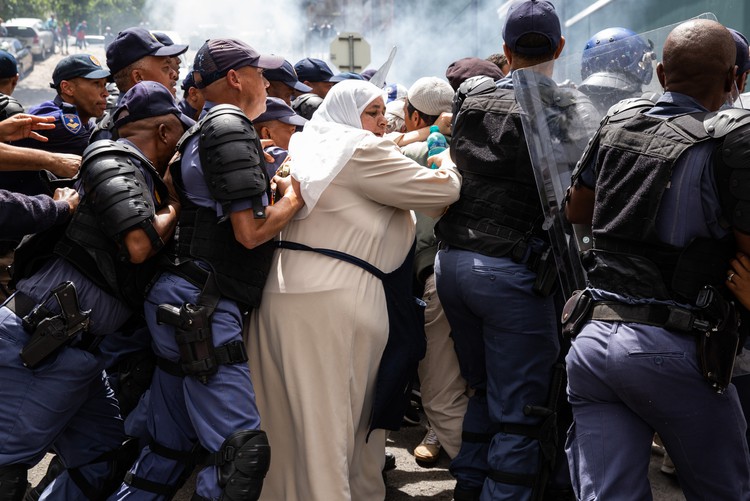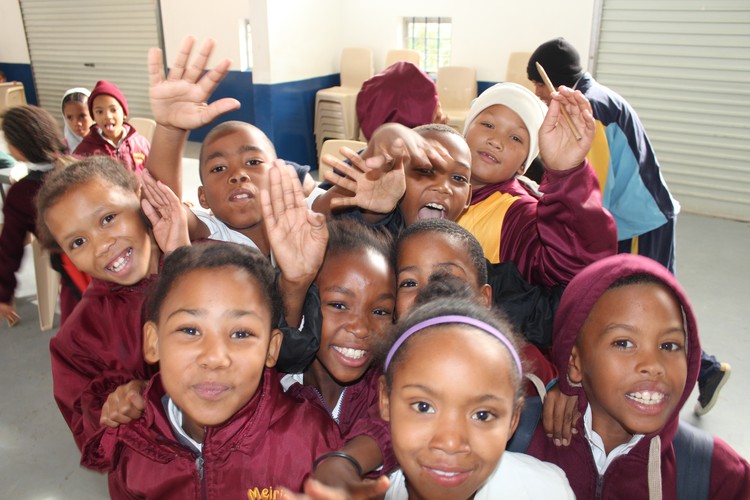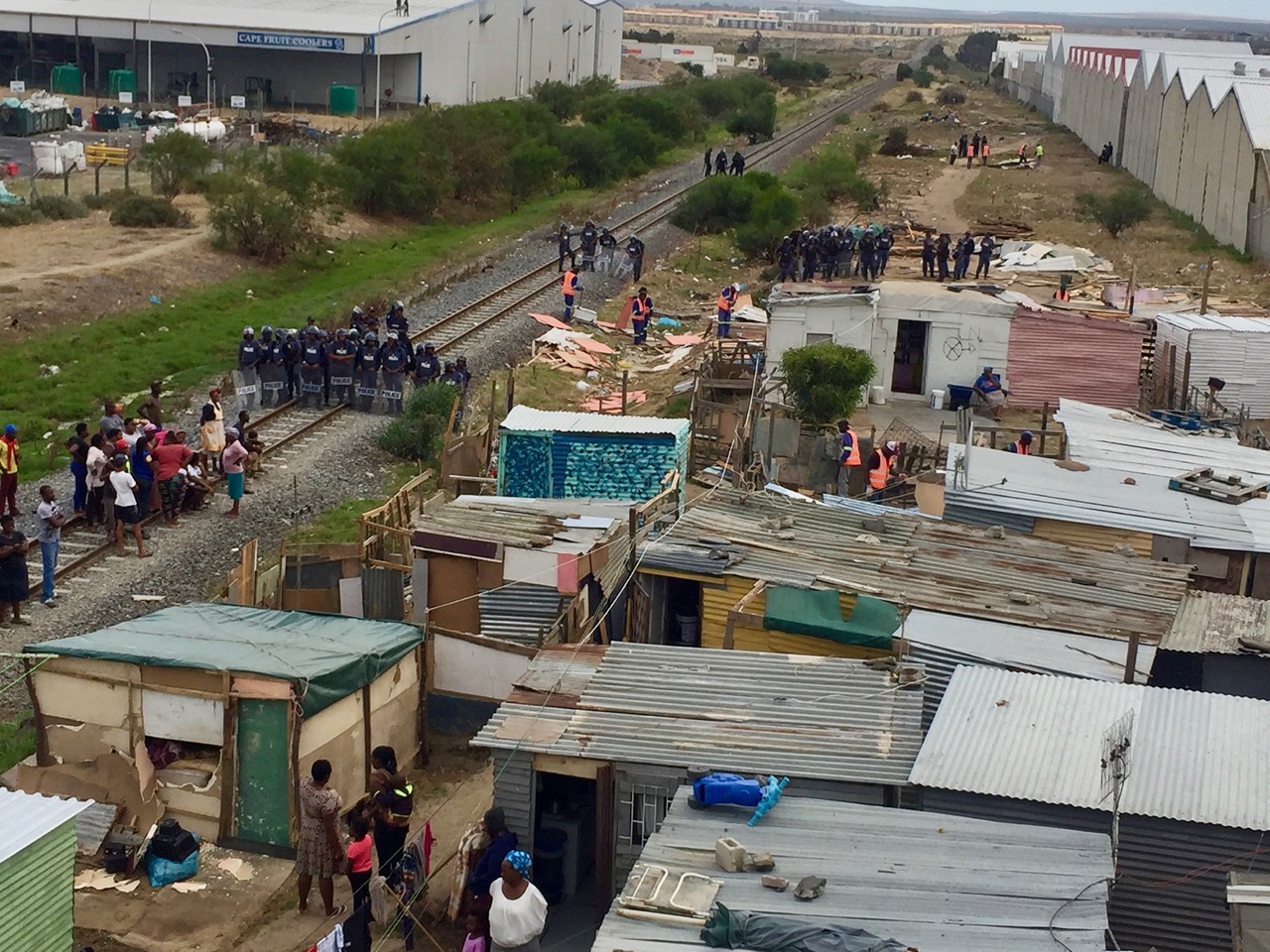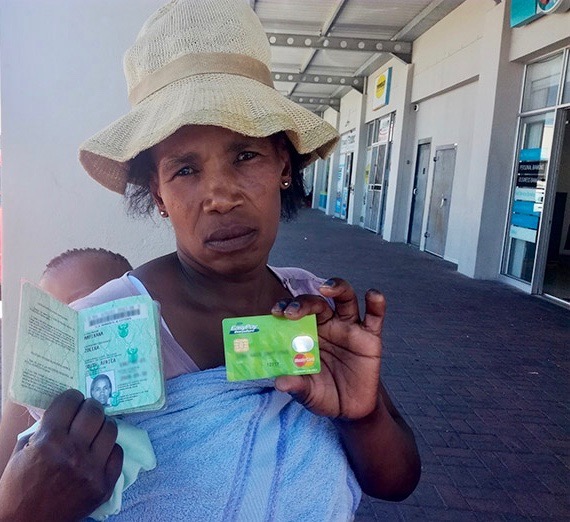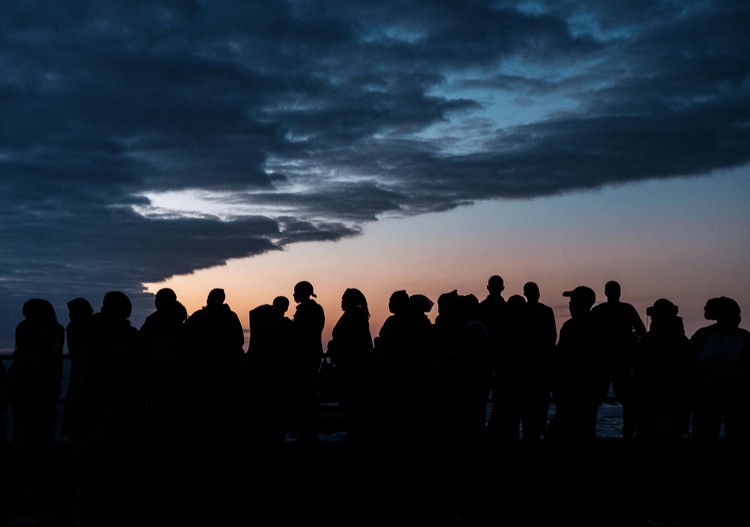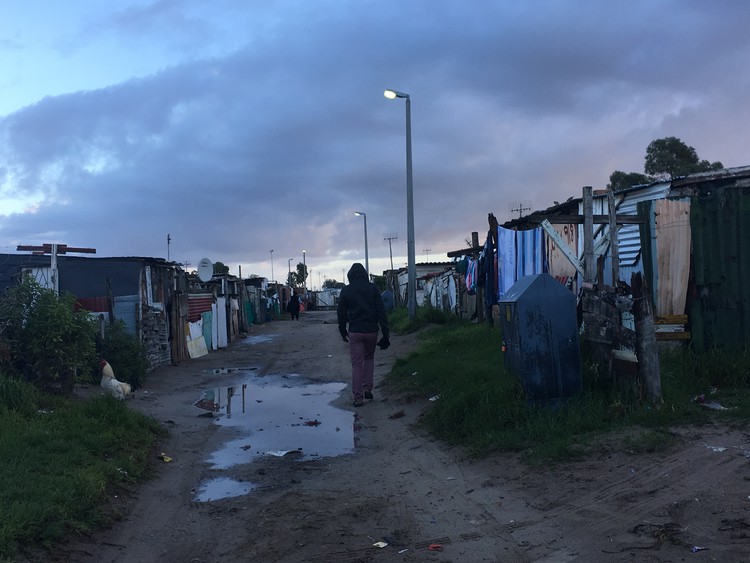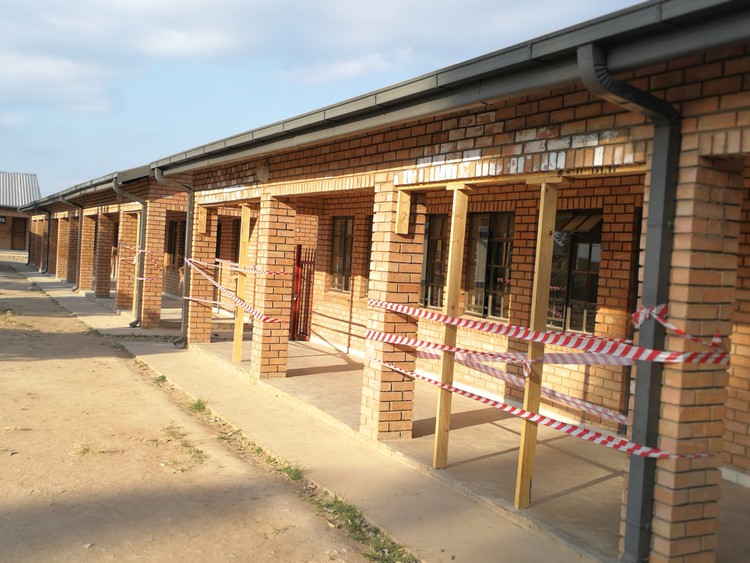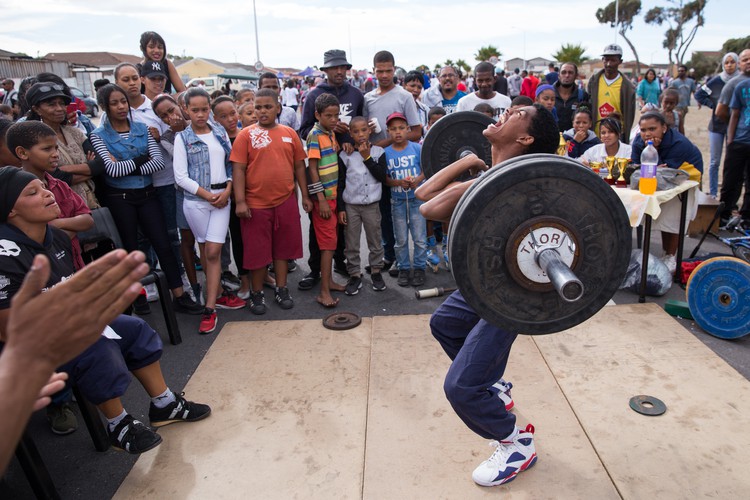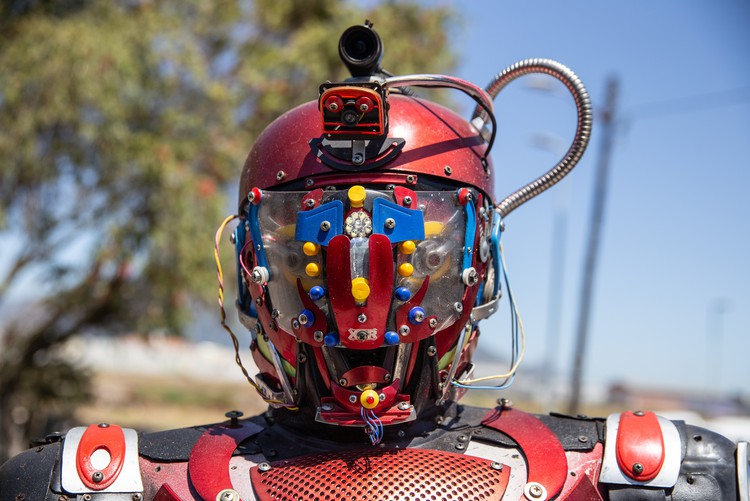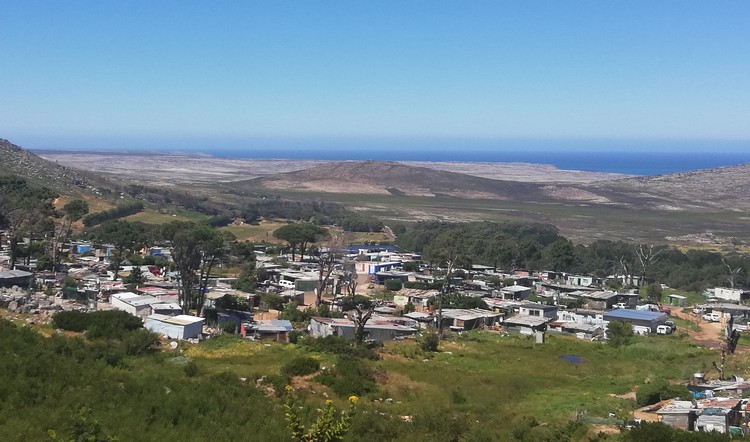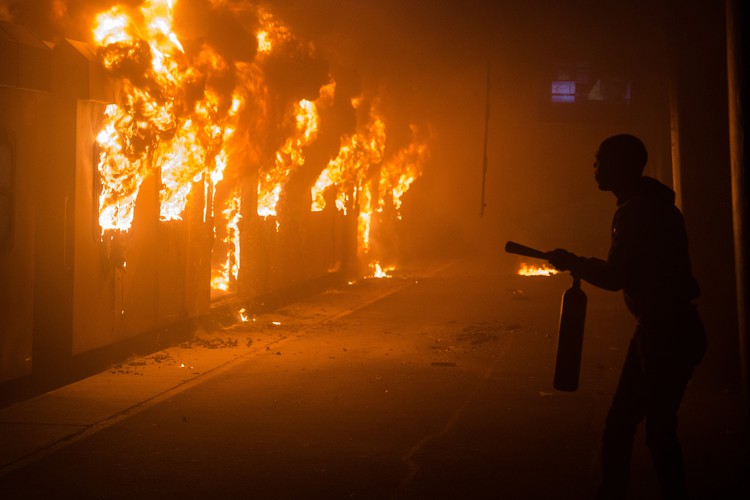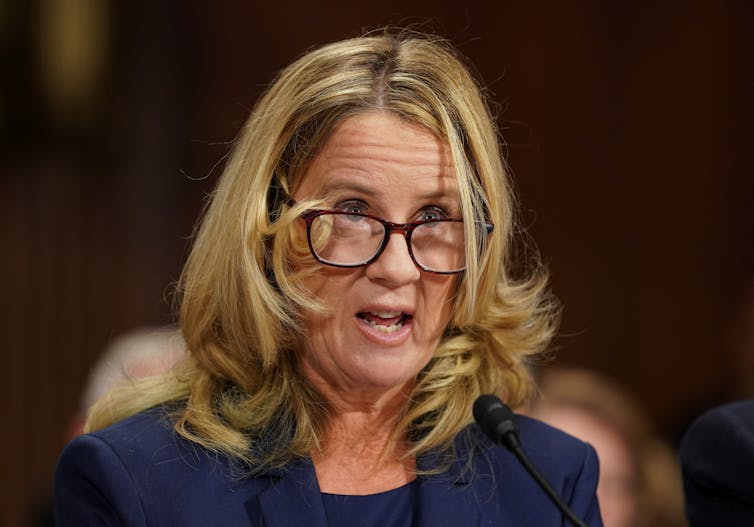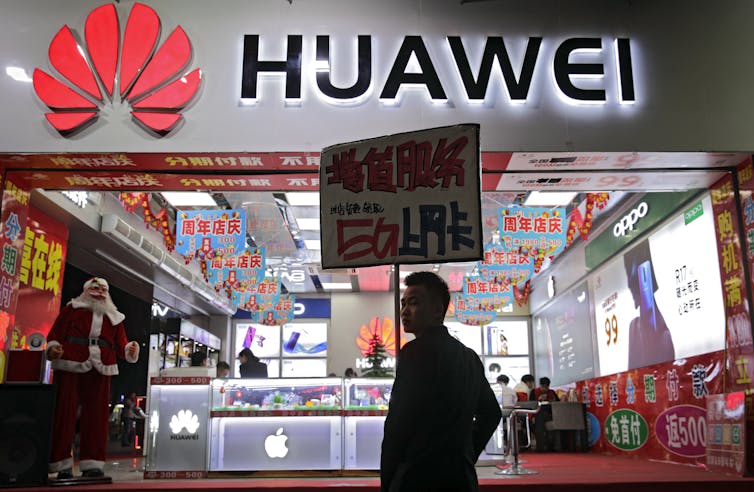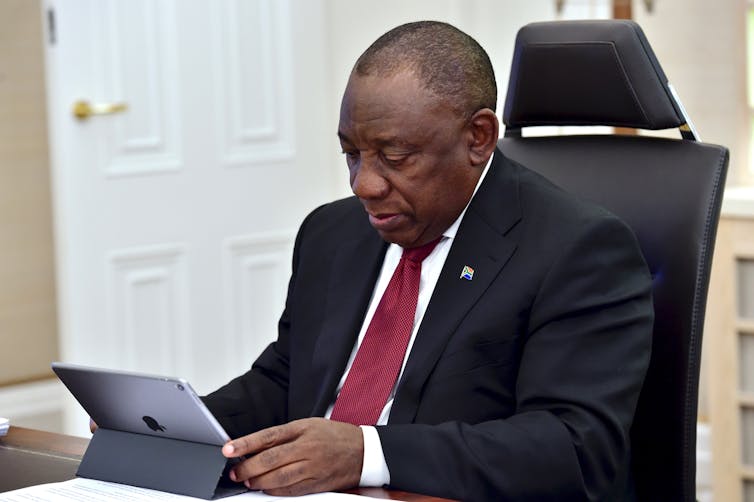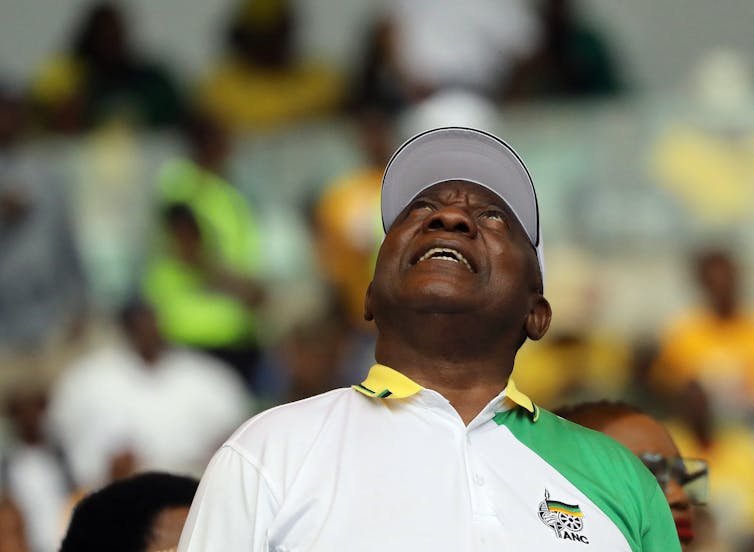
President Cyril Ramaphosa’s party, the ANC, faces a tough set of elections in May.
EPA-EFE/Kim Ludbrook
Launching the governing African National Congress’s (ANC) 2019 general election manifesto in South Africa, President Cyril Ramaphosa lauded the successes of the last 25 years of democracy. He claimed that the governing party had “given substance to the promise of a better life for all”. He declared 2019 “the year of united action to grow South Africa”, with a focus on economic growth and job creation:
Today, we are issuing a call to all the people of South Africa, to join us as we strive to accelerate change in our country, as we strive to build an inclusive economy that creates jobs and as we work towards a better future for our children.
He also emphasised that the ANC’s aim was to create a developmental state which would put the people first, and that corruption and factional politics would not be tolerated.
He outlined the ANC’s political agenda. This included mobilising for a decisive victory in the 2019 general elections; intensifying the renewal of ANC branches; fighting corruption in government, in the ANC and across society; and organising against social ills such as gender-based violence, substance abuse and racism.
But the same golden promises have been made before. They may not have the same shine any more given that South Africa is at a precarious point in its 25th year of democracy. The country faces massive socio-economic and socio-political challenges. Unemployment remains stubbornly high, particularly among young people. Economic growth is tepid and protests over the government’s poor delivery of basic services are on the rise.
A survey by Afrobarometer –- a non-partisan African research network – shows that South Africans generally believe their current economic conditions are bad. Not surprisingly, most believe that the government is dealing with economic policy badly. More than 60% think the government’s performance isn’t satisfactory on this front.
More worrying is that South Africans are increasingly becoming disillusioned with democracy because of the government’s anorexic delivery on the promise of a better life for all. While the ANC continues to make this promise, its delivery remains elusive.
The next few months will be crucial. The ANC will need to take decisive action if it’s going to win over sceptical voters.
Echoes of past manifestos
A cursory glance at previous ANC election manifestos shows that very similar promises and plans have been made ahead of previous elections.
In 1999, at the launch of its manifesto, the party urged South Africans to vote for it in return for speedy change and the delivery of services, to ensure a better life for all.
The 2004 manifesto, under the banner of “a people’s contract to create work and fight poverty”, stressed growing the economy, creating sustainable livelihoods, accessing basic services, facilitating comprehensive social security as well as fighting crime and corruption.
Similar sentiments were expressed in the ANC’s 2009 general election manifesto. The overarching theme of this manifesto was “working together we can do more”. The party claimed that a
…. vote for the ANC is a vote for a better life.
Focus areas were the creation of decent work and sustainable livelihoods, education, health, rural development, food security and land reform as well as the fight against corruption and crime.
By 2014 the promise of a “better life for all” remained an elusive dream. Corruption, allegations of state capture, and predatory political factionalism undermined trust in the ANC’s abilities to deliver on its 2014 promises. As in 2009, economic growth and job creation, rural development and land reform, addressing apartheid legacies, fighting crime and corruption, and delivering quality health and education were key priorities.
Will the electorate buy those golden promises? It’s not clear that they will, given the decline in electoral support as well trust in the ruling party.
A time series by Afrobarometer shows both these trends very clearly.
Decline in electoral support and trust
The party’s electoral support has shrunk. In 1999 the ANC held an overwhelming majority of 66%. By the 2014 general elections, this fell to 61%.
The change of voter support in certain provinces is very marked. Electoral support for the ANC declined between 1999 and 2014 in some provinces. Most notable was the decline of electoral support in the Eastern Cape, its traditional stronghold.
In the Free State, the ANC held 81% of electoral support in 1999 but, by 2014, the party only secured 70% of the vote. Similar trends were evident in the North West, Mpumalanga, Limpopo and Gauteng provinces.
Trust in the ANC remains precarious. In 2002 a quarter of South Africans who took part in the Afrobarometer survey didn’t trust the governing party at all. By 2018, this sentiment increased to 36%.
Trust in the president also fell. In 1999 37% of South Africans indicated a measure of trust in the president. By 2018 only 30% said they trusted the president a little.
Crucial times ahead
There are similar themes of addressing economic growth for job creation, of increasing education and skills development, addressing unemployment, inequality and poverty, and working to create a better life for all in the ANC’s latest manifesto.
But the party will need to take decisive action on corruption as well as facilitate the necessary conditions for economic growth and job creation to restore some semblance of trust in its governing ability.
The next few months will be crucial. There are a few caveats that may undermine its electoral performance in 2019. These include addressing factionalism and corruption and ensuring accountability for those involved in state capture. The ANC also has to get public institutions functioning in a way that delivers basic services to the people.
If it fails to do any of this, the ANC may well suffer losses akin to the 2016 local government elections at a national level and reduce its electoral dominance of South Africa’s political landscape. Indeed, the key lesson from 2016 was that people are no longer buying promises with their vote.
Joleen Steyn Kotze, Senior Research Specialist in Democracy, Governance and Service Delivery at the Human Science Research Council and a Research Fellow Centre for African Studies, University of the Free State
This article is republished from The Conversation under a Creative Commons license.
